Focusrite Scarlett 2i2 4th Gen is ideal for recording artists with a modest studio
If Scarlett Solo is too limited for your needs but Scarlett 4i4 has features you will be paying for but never use, then perhaps Scarlett 2i2 is the perfect middle ground for your studio.
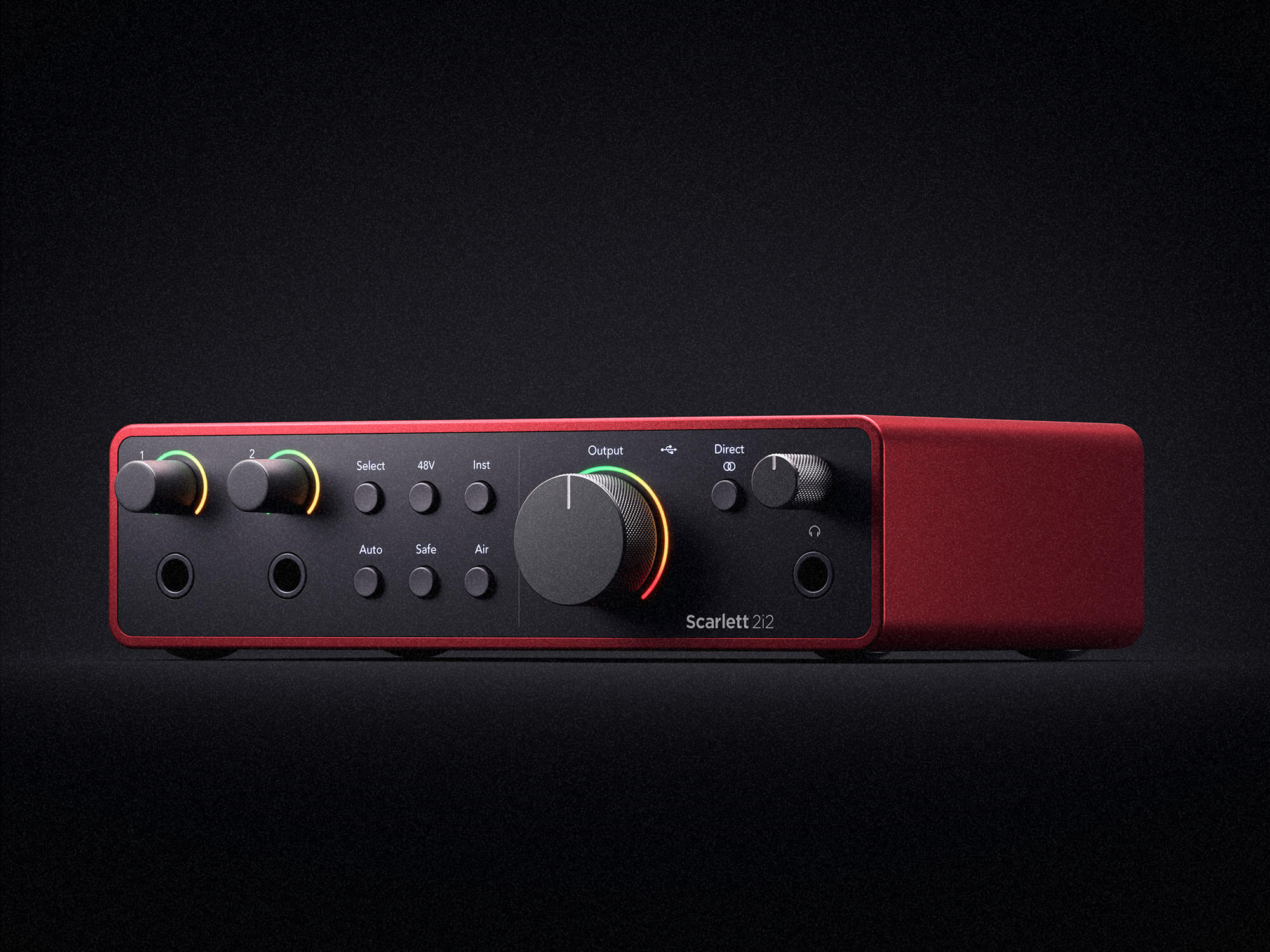
Focusrite Scarlett 2i2. Image: Focusrite
Review Overview
Our rating
8
Our verdict
⊕ RedNet converters deliver impressive 120dB of dynamic range
⊕ New Air modes sounds great and is available via all input connectors
⊕ Auto Gain and Clip Safe ensure perfect levels every time
⊕ New Gain Halos give valuable feedback and look fantastic
⊕ Excellent value for money
⊖ Very limited input monitoring - no monitor mixer in Focusrite Control 2 software
Having been founded by studio electronics design legend Rupert Neve, it is little wonder that the Focusrite name carries so much heft in the music tech world. The company is now a far cry from the boutique outfit set up by Neve, with its fingers firmly planted in many different studio-flavoured pies, but its reputation for sonic excellence – especially in the realms of preamps and input conditioning – has remained strong.
It’s distilled this reputation into a number of different rose-themed product lines. The affordable Scarlett range of audio interfaces, which has just been updated to its 4th generation, is the focus of our attention here, specifically the Scarlett 2i2.
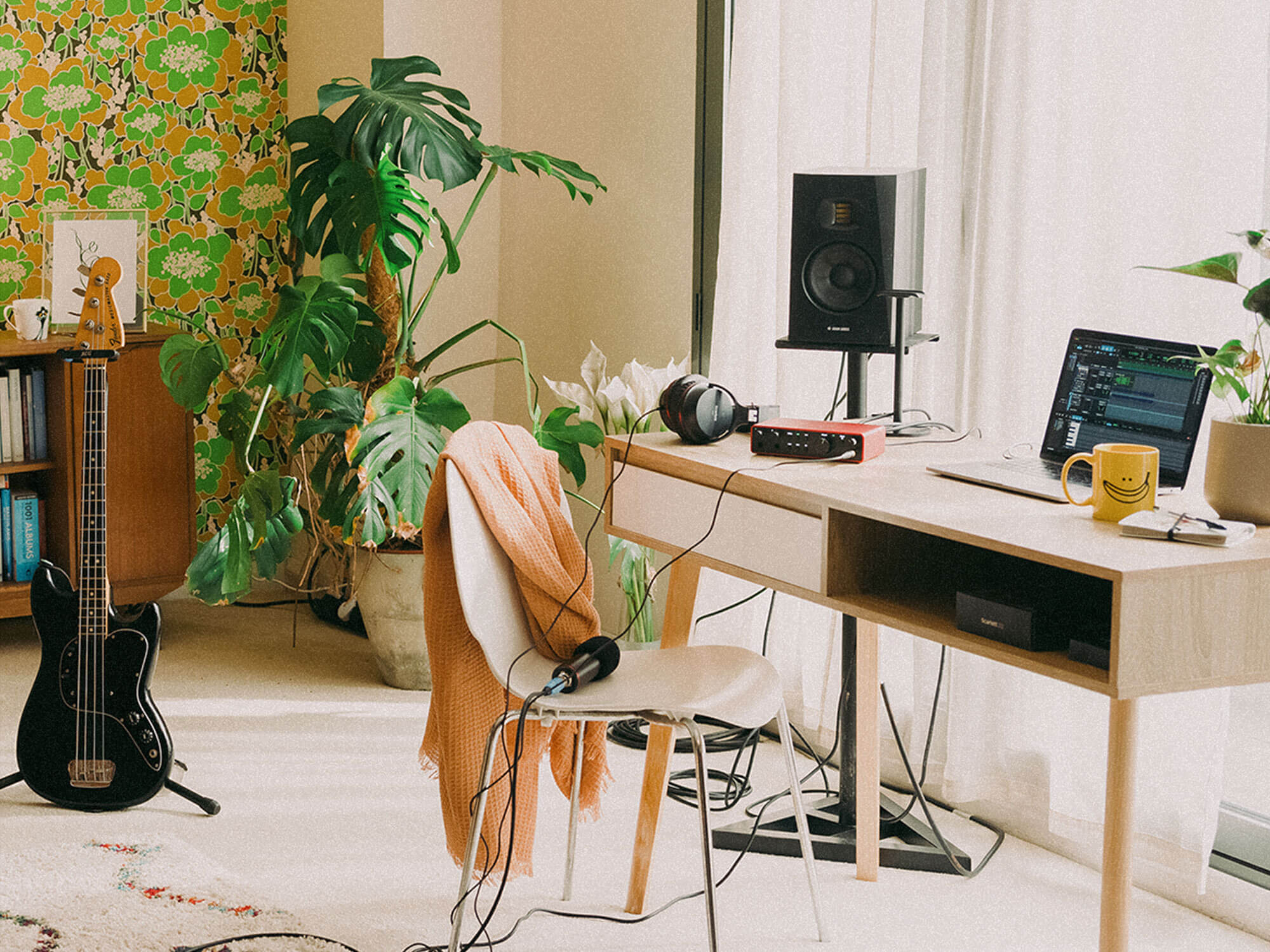
Two-by-two
Connection-wise, Scarlett 2i2 offers two input and two output channels. The inputs can take instrument, line or mic signals, however the connectors are split between front and rear panels – instrument/line jacks on the front panel, and mic XLRs on the rear. The inputs feed an all-new converter taken directly from Focusrite’s flagship RedNet range, and that provide 120dB of dynamic range, which is considerably more than Scarlett 3rd Gen, and very impressive for such an affordable interface.
The pair of output jacks are also rear-mounted, as you would expect, and are doubled by a front panel headphone output powered by a headphone amp that’s been newly designed for Scarlett 4th Gen. This delivers a strong level suitable for most circumstances and, whilst not the loudest, is very clean and crisp all the way to full volume.
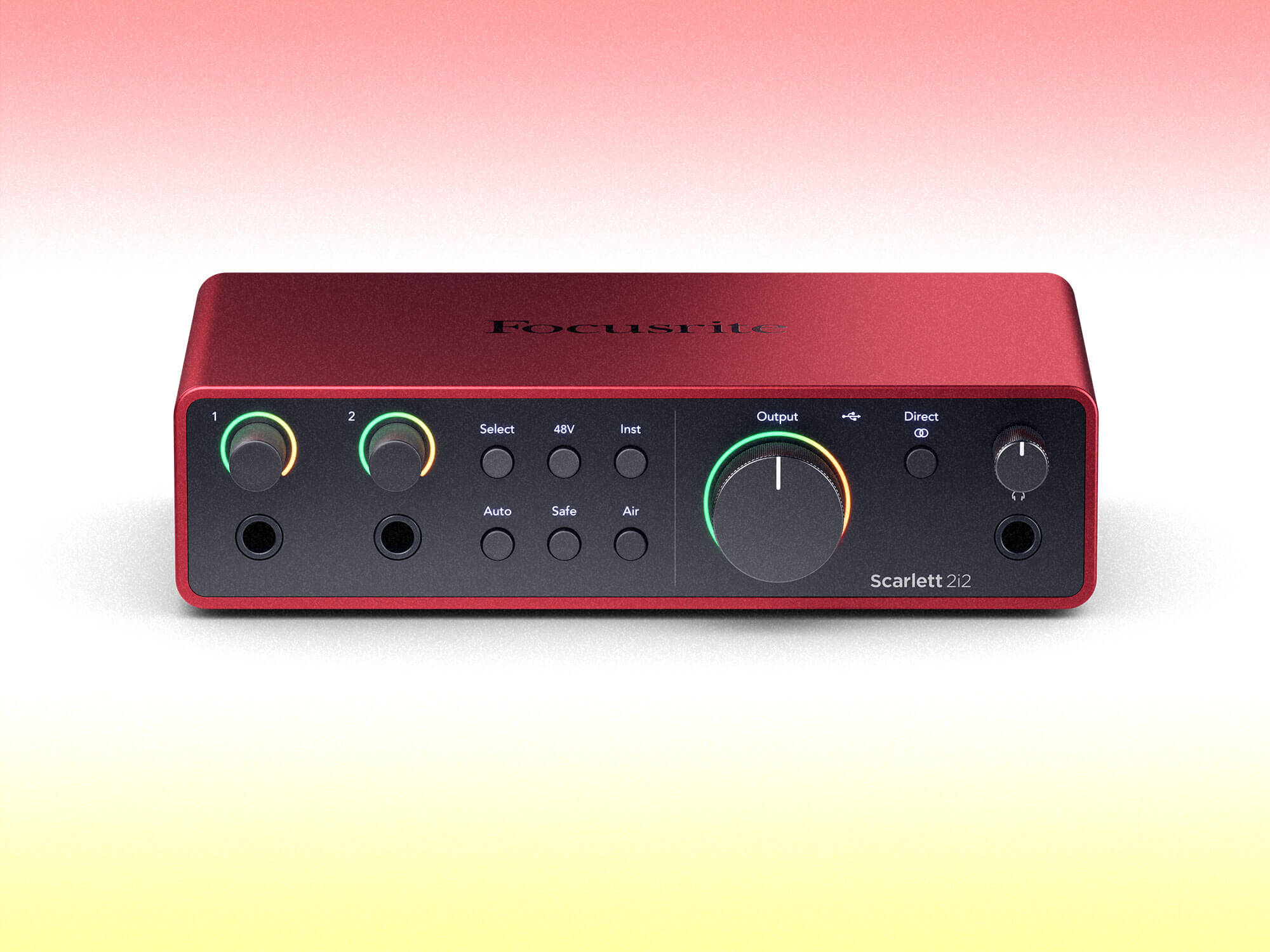
The unit connects to the host device via USB, and whilst it can be host-powered, a second power-only USB port is included when connecting to low-power devices like laptops and tablets.
All of this is packed into a compact enclosure that sports Focusrite’s resplendent metallic red colour scheme. This stylishness has received a lift in the form of new ‘Gain Halos’ – circular level meters that surround the input gain controls and output level control. Unlike the previous generation’s halos, which simply flickered on and off, the new halos advance around the ring to provide detailed visual feedback of both signal level and, when adjusting input gain, the gain level.
Air and assistance
All input configuration – with the exception of stereo-linking the two channels – can be performed from the interface’s front panel, which is very convenient. This includes enabling the global phantom power, switching a channel between line and instrument mode, and enabling the preamp Air modes and assistance tools.
There are now two Air modes in Scarlett. The first is similar to the Air mode found in the 3rd Gen interfaces, introducing a presence peak that can be particularly flattering to vocals and other sources that carry detail in the upper-mid registers. The curve has been modified in the 4th Gen hardware, though, taking the edge off its intensity and, in doing so, marginally broadening its usefulness.
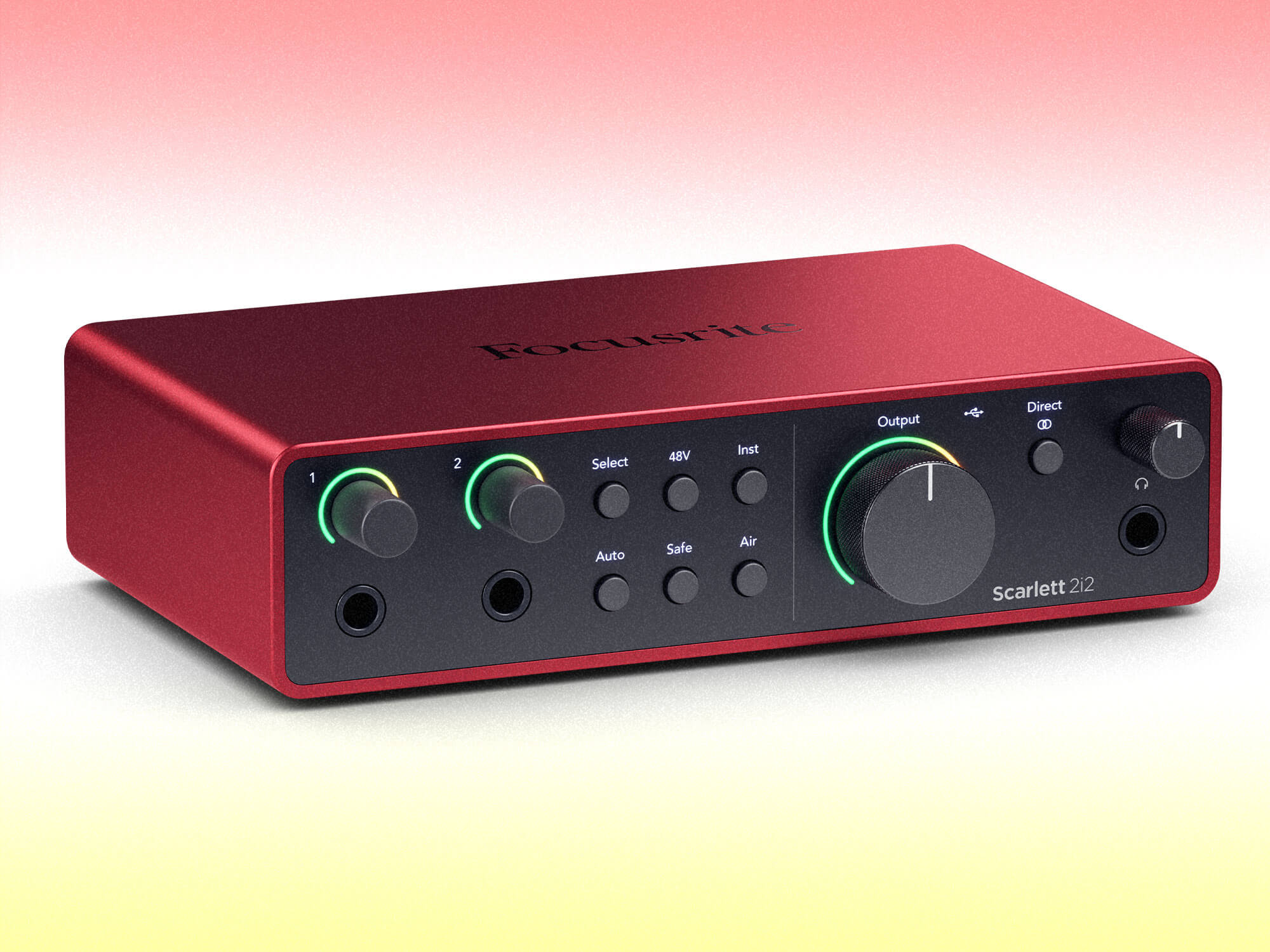
The second, entirely new, Air mode maintains the presence peak but adds to it a gentle harmonic distortion. This breathes liveliness and analogue-style sparkle into signals, and is well suited to vocals, acoustic guitars and the like. Thankfully – and unlike Scarlett Solo – Air is available via both the interface’s mic inputs and its instrument/line inputs, and what makes this particularly welcome is how well the new Air mode works with DI’d electric guitars and analogue synths – the former drives that bit harder into plugin amp simulators for a punchier sound, whilst the latter benefits from the additional high-end detail.
In addition, 2i2 includes the same Auto Gain and Clip Safe features as found on Scarlett 4i4. As its name suggests, Auto Gain listens to a few seconds of your signal and automatically dials-in the ideal input gain. Clip Safe, on the other hand, constantly monitors the input signal level and reduces the gain when it detects a peak that would result in digital clipping. Between them, these two features make light work of capturing a perfect, unclipped signal every time.
Direct control
The front panel controls are duplicated in the Focusrite Control 2 app, where there is also an option to link the two channels for stereo operation. The input level of each channel is also shown but, as we found with Scarlett Solo, there is no monitoring mixer for balancing the inputs’ direct monitor signals with each other, or with the return-from-DAW signal.
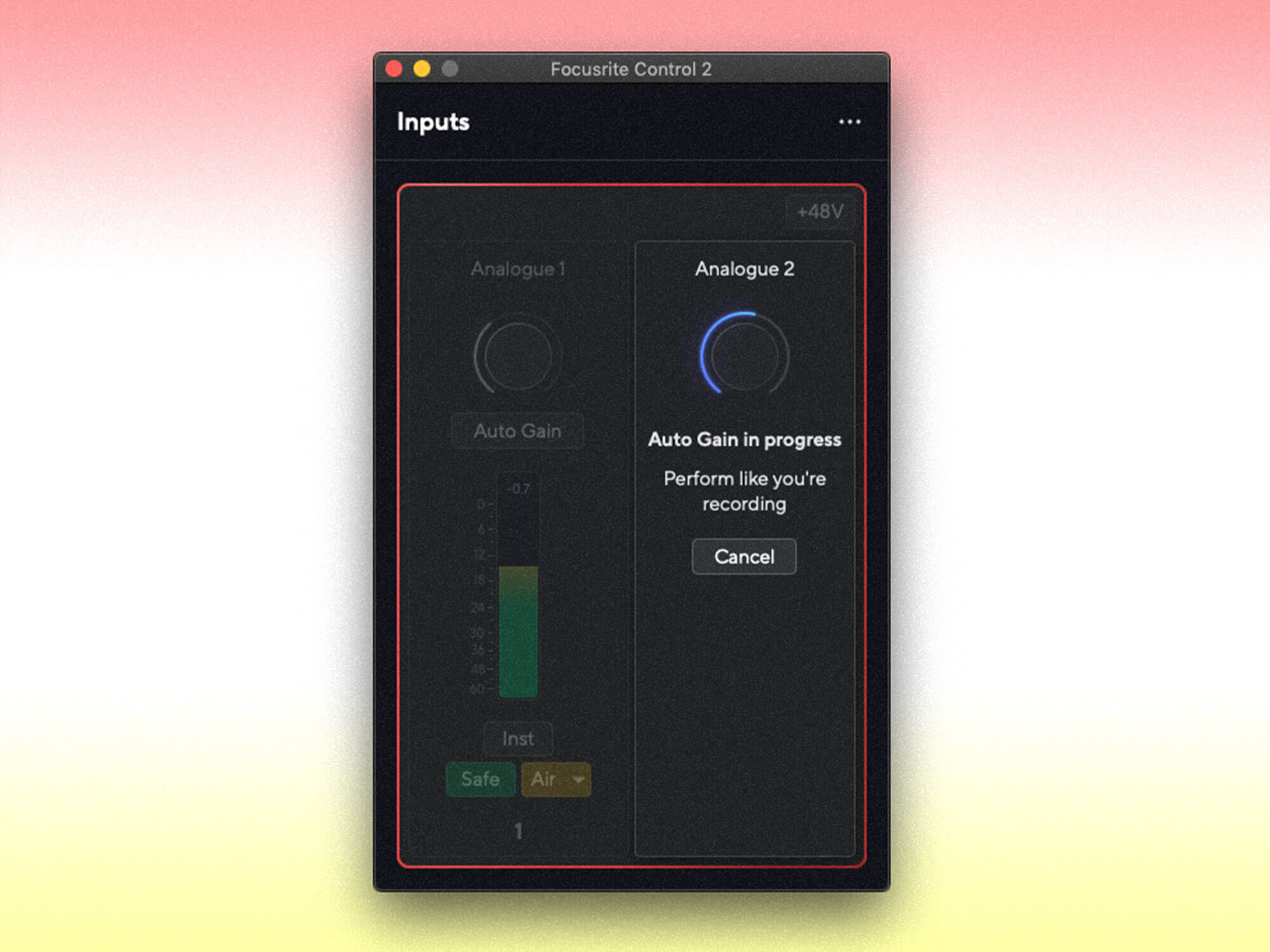
Direct monitoring can be switched between mono and stereo modes (with stereo mode panning the input signals to opposite extremes in the headphones to aid separation), but otherwise is either enabled or disabled, and whilst this does keep things nice and easy to use, it won’t suit everybody. Focusrite is considering adding monitor mixing to the software,but, in any event, the interface is quite zippy, with input and output latencies low enough for most purposes – we measured 8.583ms of input latency and 7.354ms of output latency at 48kHz – so monitoring via a DAW is not out of the question with Scarlett 2i2.
Sitting halfway between the more capable Scarlett 4i4 and the ridiculously affordable Scarlett Solo, the Scarlett 2i2 4th Gen represents a middle-ground solution to audio I/O. It is more flexible and sports a better feature set than Solo, yet it manages to be significantly more affordable than 4i4 without sacrificing much of the functionality – and none of the sonic credentials – of that higher-specced interface.
Key features
- Price: £199.99 / €184.87 / $199.99 (USD) / $290.00 (AUD)
- USB audio Interface
- 2 input channels, 2 output channels
- Front panel line/instrument input jacks
- Rear panel mic input XLRs
- Rear panel main outputs
- Front panel headphone output with independent volume control
- Powered from host computer or via separate USB power connector
- Full suite of production software including DAWs, effects and instruments
- Contact: focsurite.com